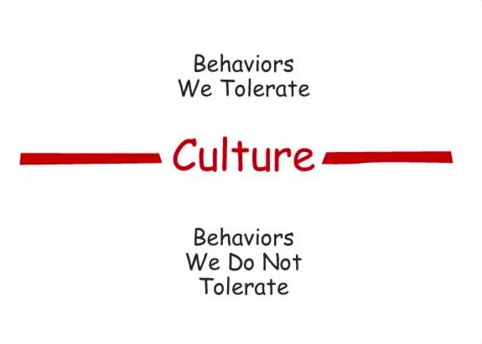As a leader, have you ever wondered why people aren’t understanding your strategy or intent? Or, as an employee, are you scratching your head at the lack of communication around key initiatives or policy changes in your organization? According to Forbes, companies with highly effective communication practices have 47% higher total returns to shareholders compared with the organizations that are least effective at communicating. Countless other studies and articles share similar statistics. If the value of internal communication is so clear, why is it often left as an afterthought?
The answer: organizational communication practices must be intentionally developed as a part of your culture. Your organization’s culture is what helps or hinders communication at all levels. Culture dictates how everything is received in or processed through your organization. The most powerful cultures are explicit and intentional. Leaders and employees alike must foster intentional culture, including the culture around communication within the organization.

At The Clearing, we believe that CULTURE – though seemingly complex and dynamic in how it operates – can be as simple as the line drawn between behaviors that the organization’s members tolerate and behaviors that members do not tolerate.
With that in mind, leaders can effectively impact positive communication practices across their organization simply by supporting and demonstrating the use of desired communication behaviors and tools. On the flip side, leaders and staff must also make declarations about communication practices that will not be tolerated. (See CULTURE PRIME above, The PRIMES© are documented in the book, The PRIMES: How Any Group Can Solve Any Problem, (John Wiley & Sons, Inc., copyright © 2012) authored by Chris McGoff, founder of The Clearing.)
Three Practices for Influencing Your Desired Communication Culture
#1 – Get Intentional About Designing Your Desired Internal Communication Infrastructure
Think about roles, processes, and communication channels that should be formalized, and leave room for ad-hoc communication needs. Formalization of communication infrastructure is especially important for mid-and large-size organizations to reach employees at all levels.
Get employees involved in the design of this infrastructure, and socialize to make sure people understand roles and channels and are using them. Finally, your infrastructure should be designed with your communication goals and desired communication culture in mind. For example, if you’d like to increase knowledge sharing across project teams, your infrastructure should include considerations for knowledge-sharing experiences and tools that help knowledge sharing. Consider designing cross-team “brain trust” meetings, organizing brown bag “lunch and learns”, and using virtual tools such as Slack that allow for file sharing, collaboration, and real-time questions and answers.
#2 – Institute and Support Clear and Open Feedback Practices
If you’re trying to boost communication across your organization, try emphasizing feedback as an element of your organization’s culture. If people are open to feedback, communication is more likely to be open and transparent. People won’t be as afraid to share “bad news” in a culture that embraces feedback, and employees who are accustomed to giving and receiving feedback will be better prepared to receive and respond to news or information that is perceived as less-than-positive. According to Harvard Business Review, leaders and managers must integrate the desired behaviors into their team’s daily routines in order to normalize those behaviors within the organization’s culture. This means not waiting for a special occasion to share positive or constructive feedback – and can include incorporating feedback into team meetings and even public settings, as appropriate – to encourage groups to think collectively about how things are going well or could be improved. At The Clearing, we encourage our project teams to meet immediately after completing deliverables, events, or projects to consider what went well or what could have been improved. By using techniques such as this, your organization can build its feedback muscle and begin to normalize feedback, which will encourage information flow and have an added positive effect on individual and team performance.
#3 – Adopt an Agile Model – and be Open to Making Changes
If you’re noticing that as your organization grows or evolves, your communication practices are no longer supporting your goals, then adopt an agile approach to your communication infrastructure whereby you can test new approaches and quickly make changes. According to McKinsey, agile organizations have a 70 percent chance of being in the top quartile of organizational health, a direct indicator of long-term performance. Agile organizations combine an explicit “North Star” with a flexible, distributed approach to value creation to rapidly act on opportunities. In an agile model, employees at all levels of your organization’s network proactively watch for changes in preferences and act upon them. As feedback is generated and received on organizational processes or about the communication infrastructure itself, incorporate a “rapid learning cycles” approach to adapt your organization’s communication practices and test new ways of working.
SO WHAT?
It’s no mystery that good, intentional internal communication can directly impact positive organizational performance. For leaders embarking on a change initiative or transformation, it’s especially important to make your desired communication CULTURE explicit at the beginning of the CHANGE or TRANSFORMATION initiative. The organization needs to recognize that CULTURE – much like communication – is a living thing; messages and behaviors are being shaped all the time, whether actively or passively. While everyone in an organization has a role in developing a strong, agile communication culture, leaders are responsible for making it intentional and explicit. Take time today to activate your role in shaping your organization’s internal communication practices.

